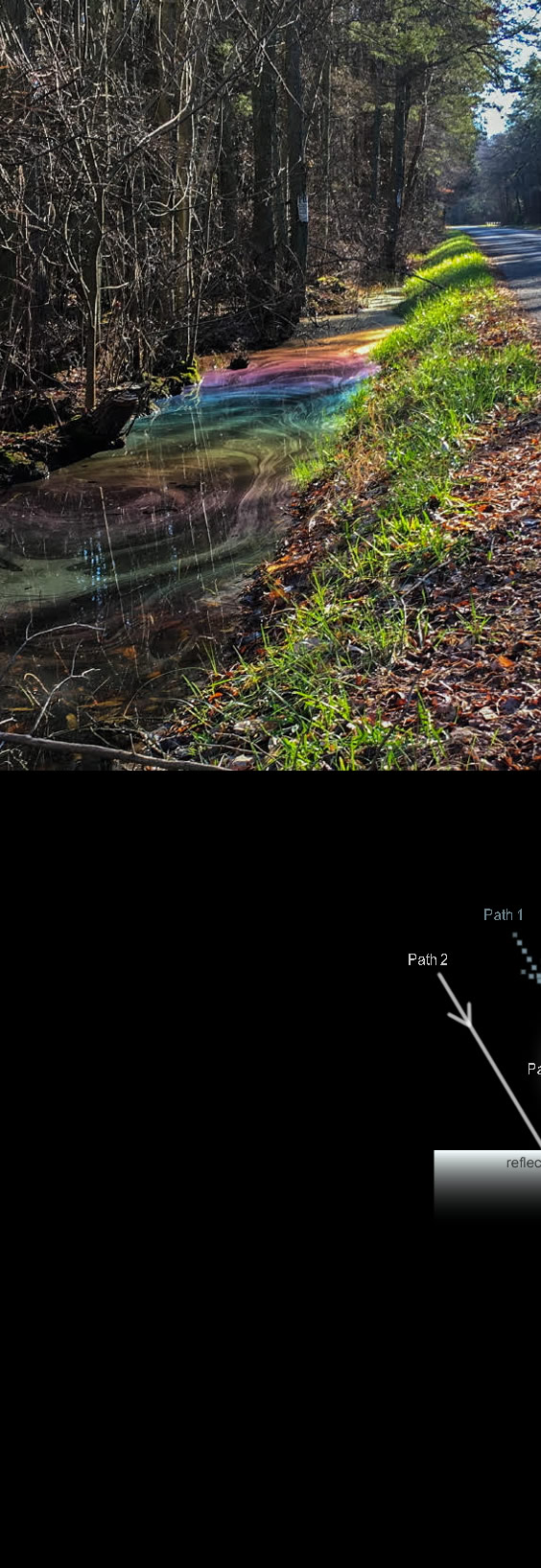Qu�telet Colours
toptics
A
Highlights
Spotted by Steve Mattan while driving one morning. Optical effects abound – even in a roadside ditch.
Image ©Steve Mattan, shown with permission
Iridescent colours on still water dusted with algae, pollen.. ..or dust. Quételet scattering, named after Adolphe Quételet, more known for his statistics and sociology, is responsible.
We need small particles resting on, or slightly elevated from, the water surface. Now imagine light waves reaching one of them – let’s call it by path 1 as at right. The particle scatters the waves predominantly forwards. They reflect off the surface and direct upwards towards the eye.
There is another route for waves. Path 2. Waves first reflect from the surface then reach the particle. They scatter forwards – again towards the eye.
The two wave trains interfere to give the colours.
Try not cleaning windows during a long dry spell. Their dust will give beautiful Quételet colours and interference fringes.






